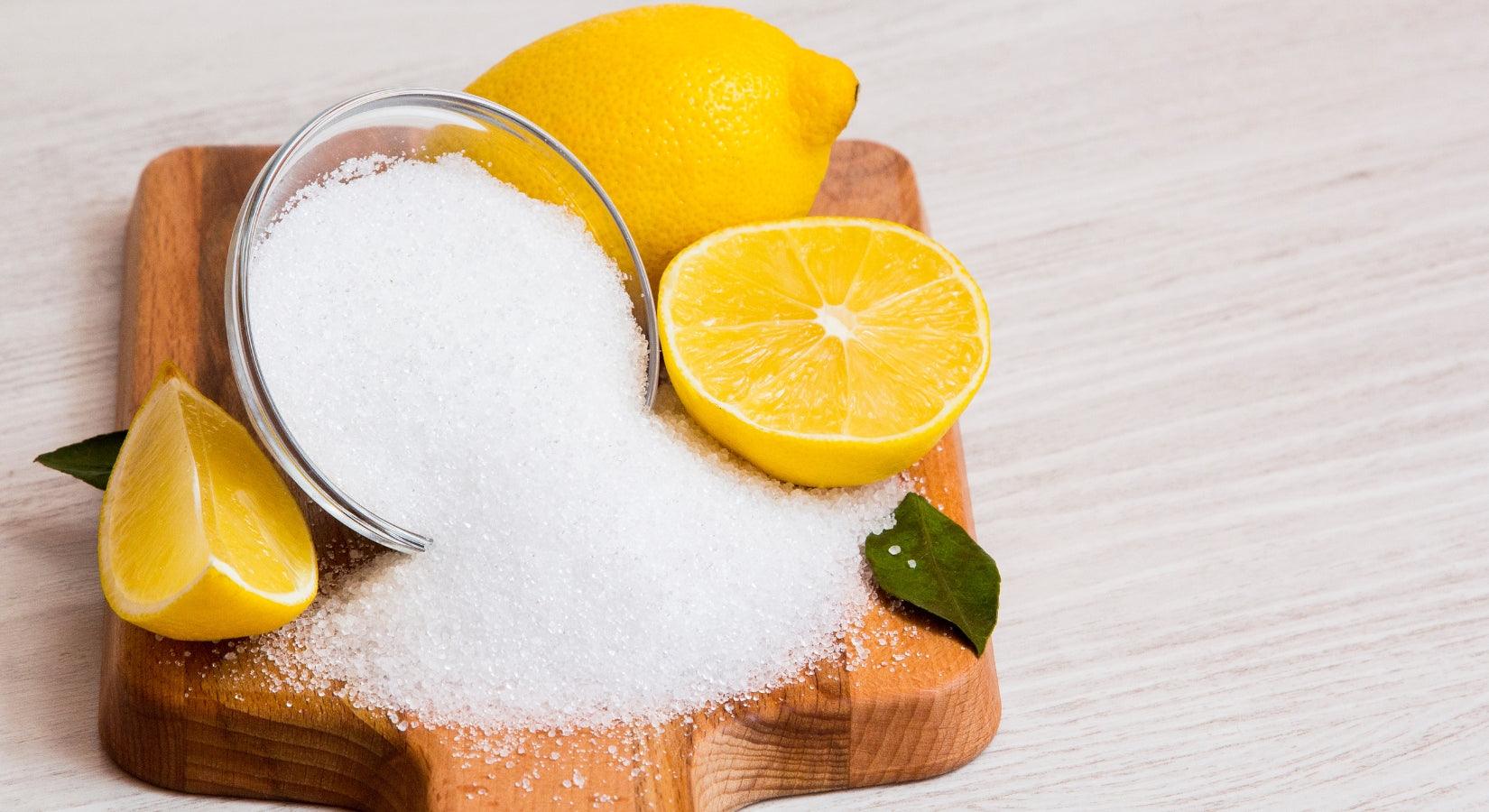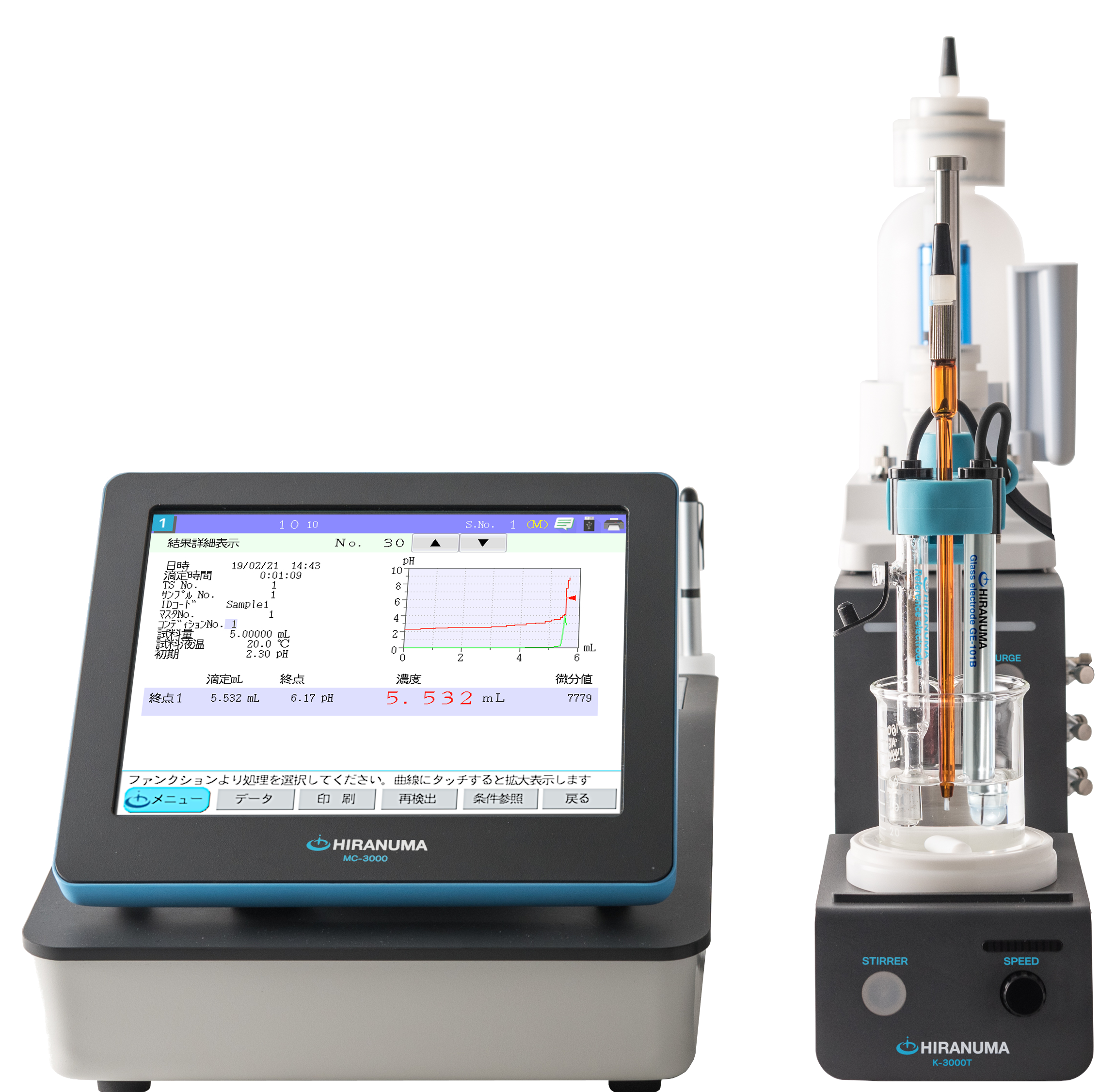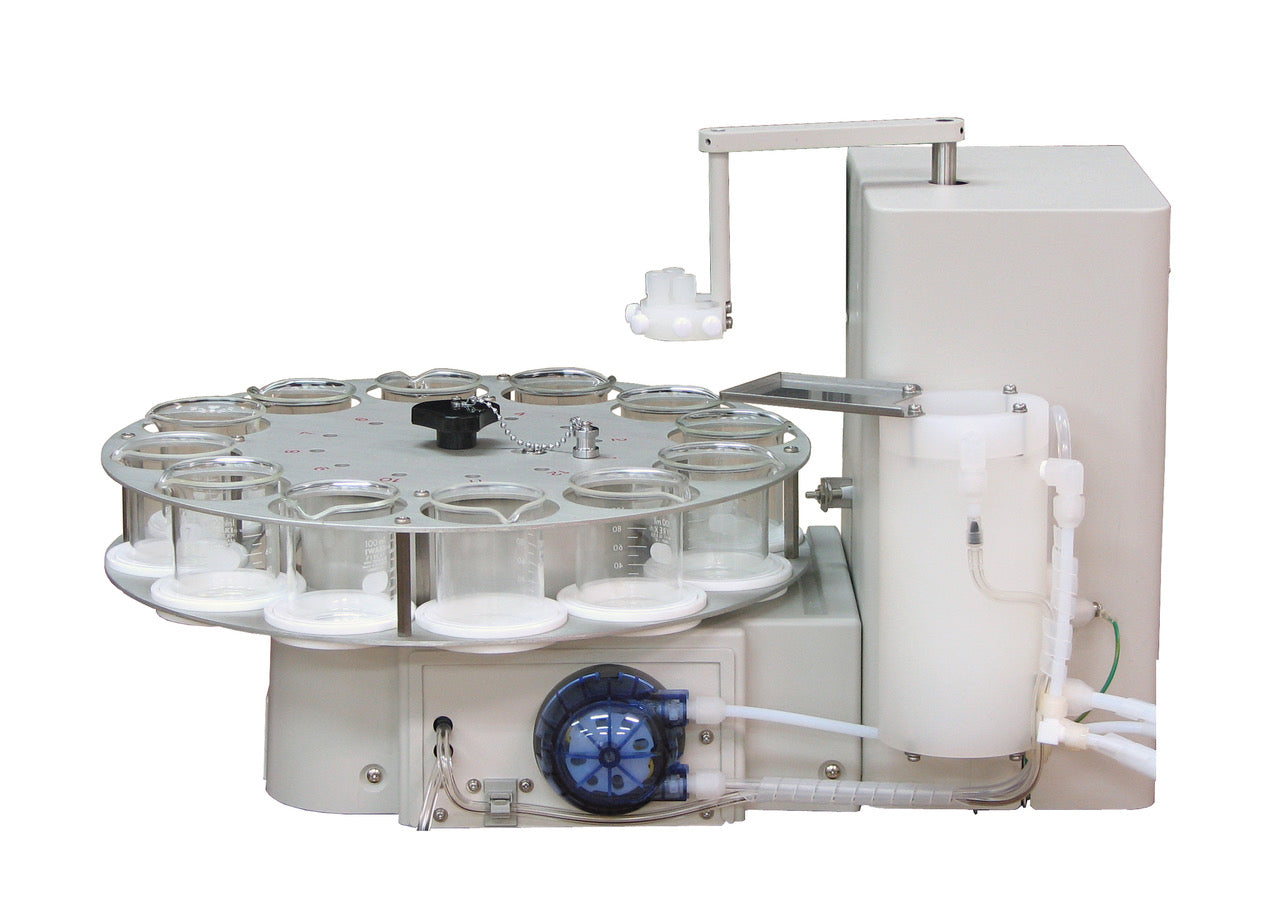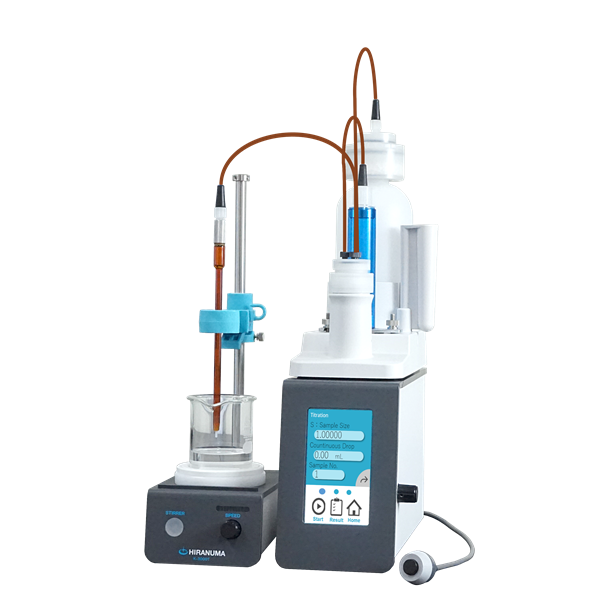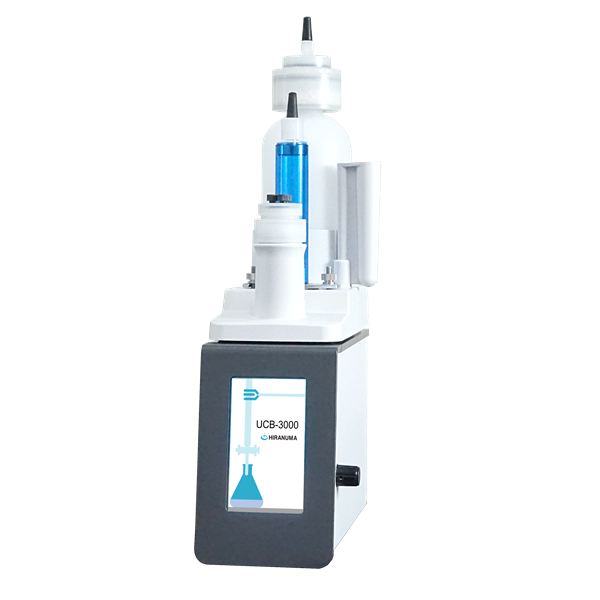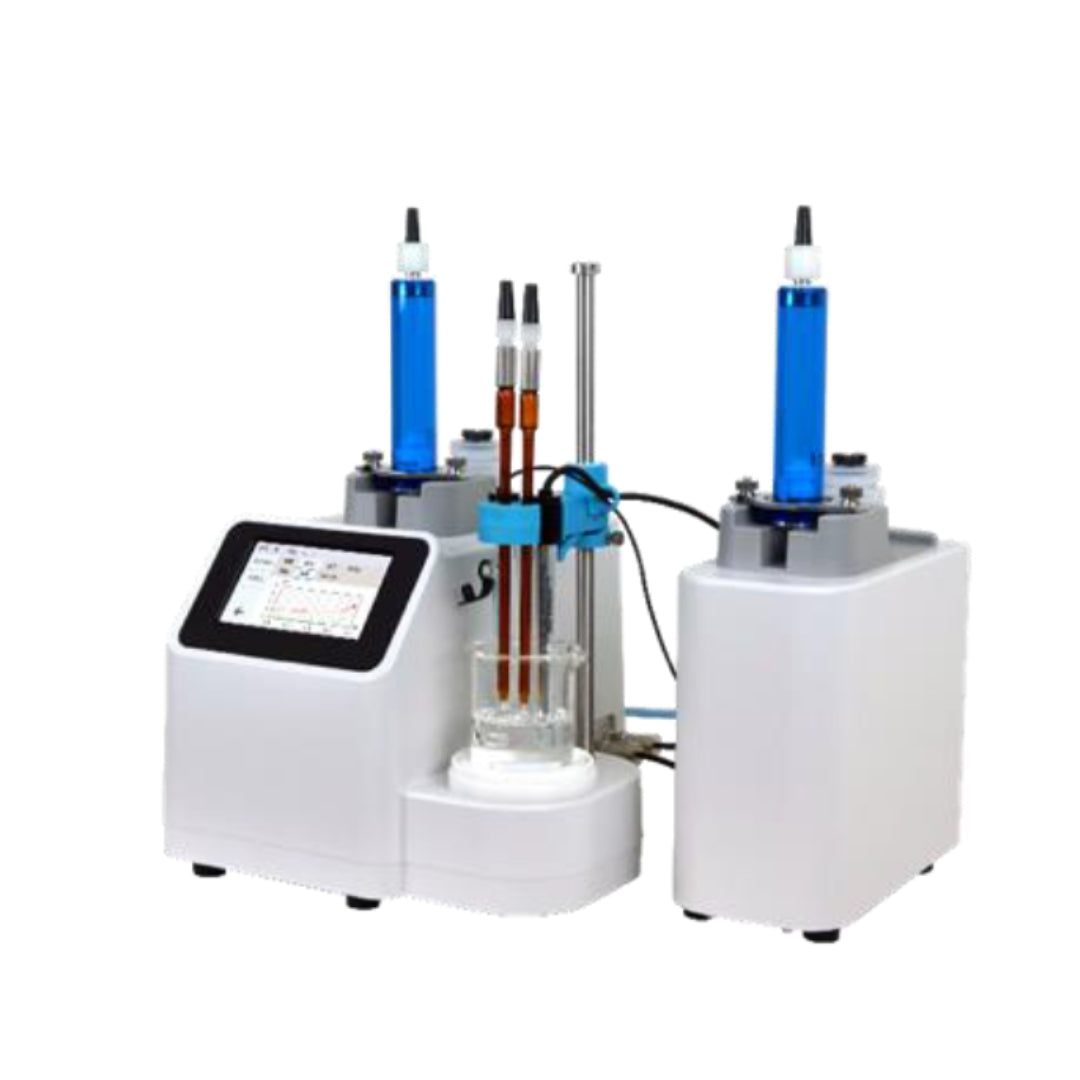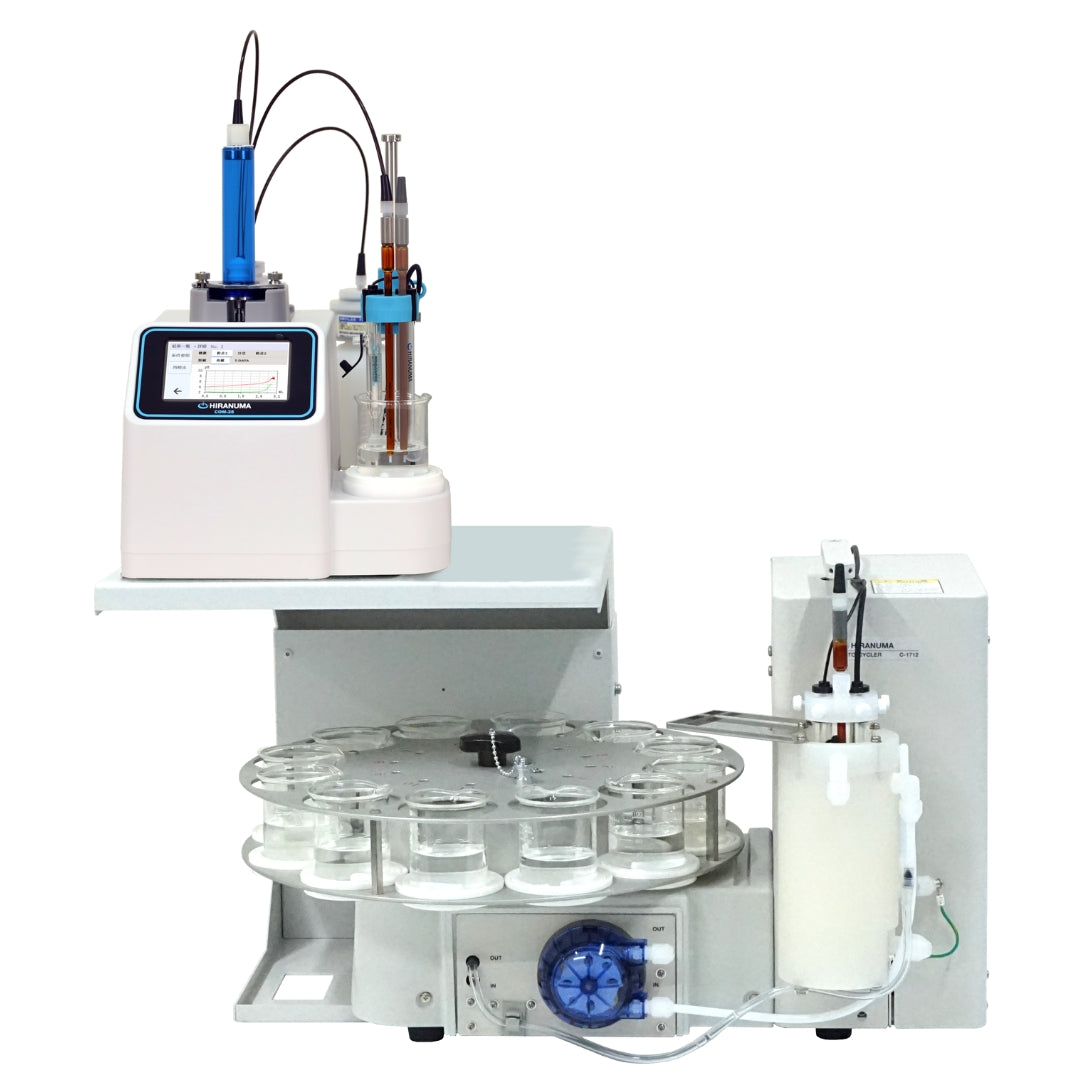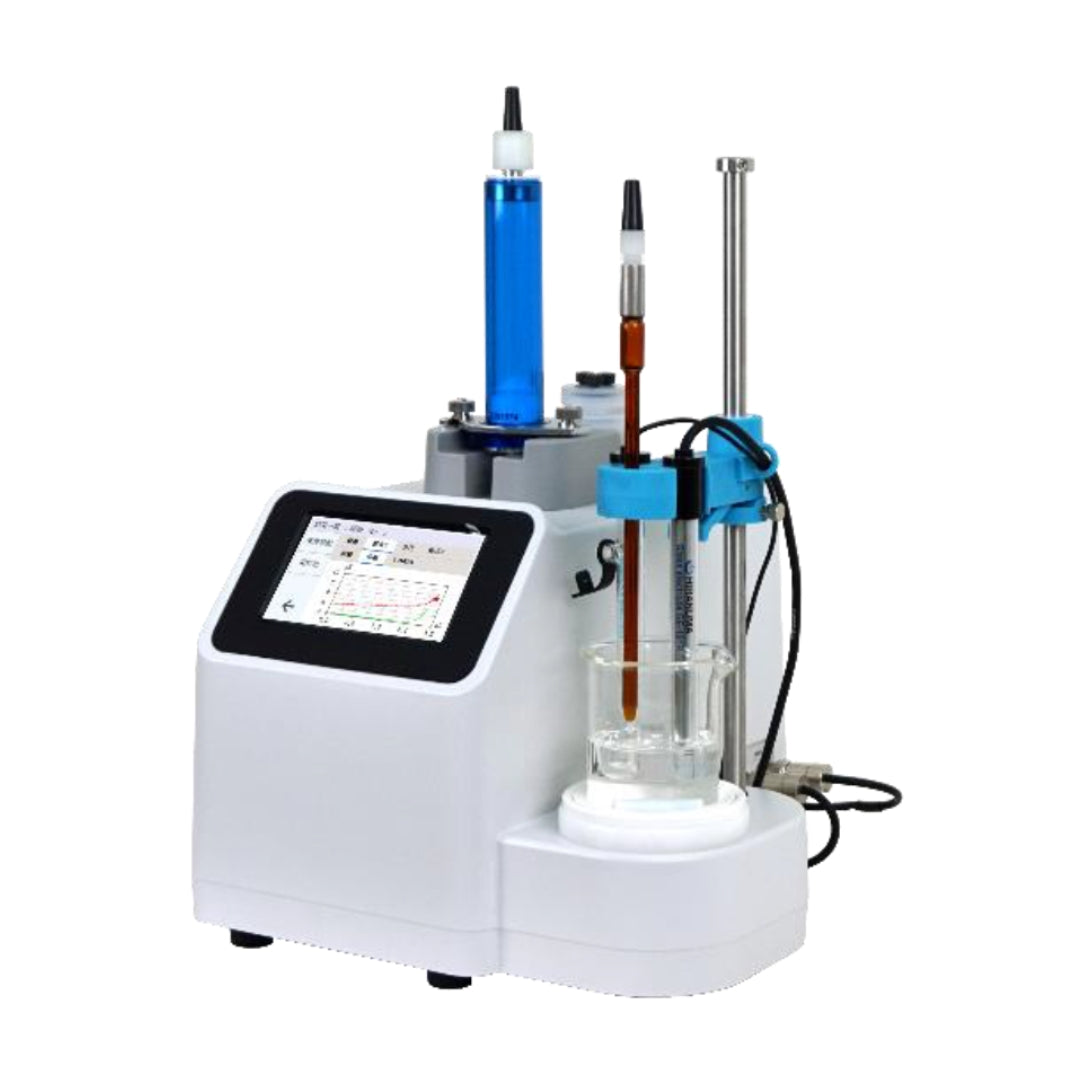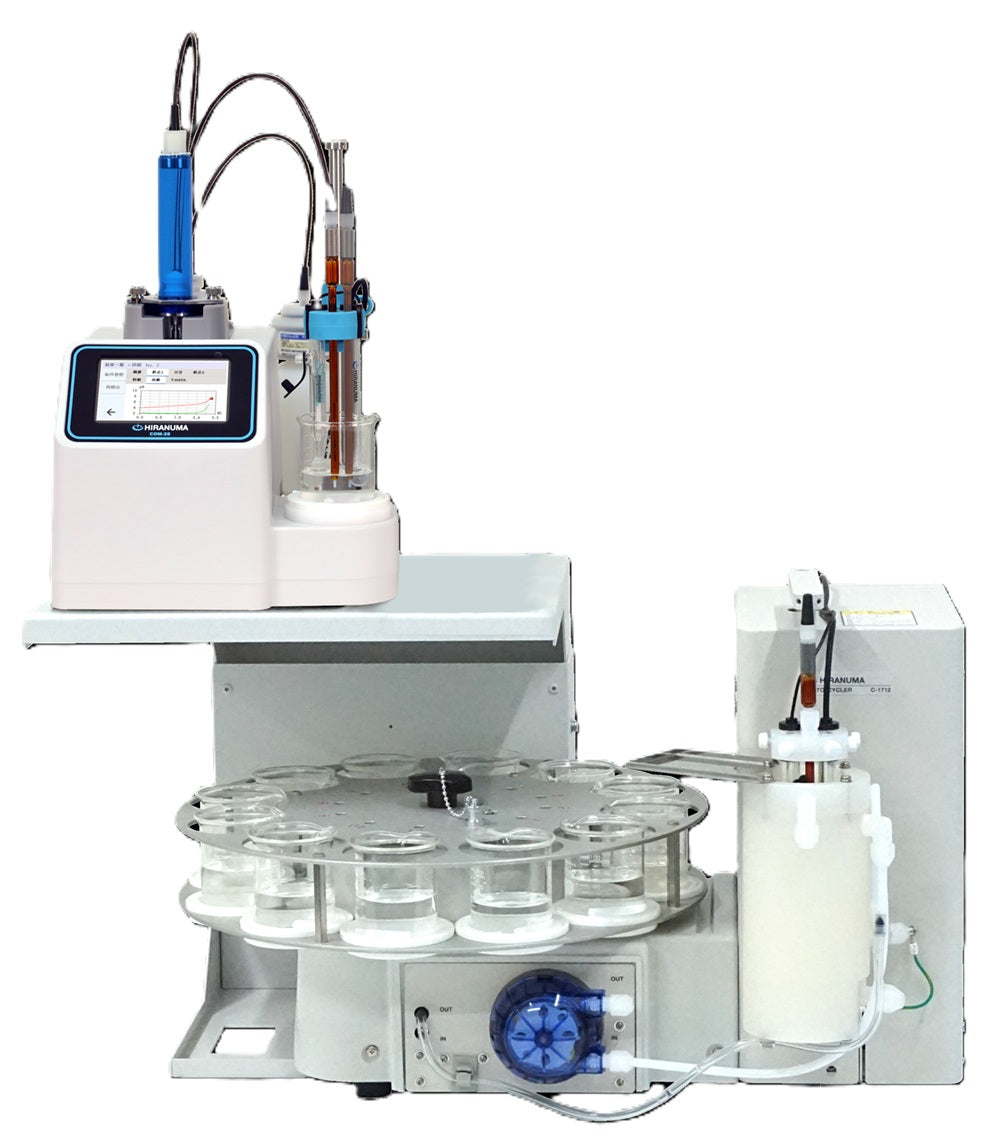| HIRANUMA APPLICATION DATA | Automatic Titrator | Data No. | K3 | Jul. 14,2020 |
| Organic acid | Purity determination of citric acid |
1. Abstract
Citric acid is oxycarboxylic acid which has carboxy group (-COOH) and alcoholic hydroxyl group (-OH).
It can be dissolved in water and has acidic property. Citric acid is produced as raw material of organic compound or food additive.
“JIS K8283” prescribes the determination method for the purity of citric acid by the neutralization titration using phenolphthalein indicator. This report introduces an example of the potentiometric titration (formula (1)) with sodium hydroxide standard solution for the purity determination of citric acid monohydrate according to “JIS K8283”.

2. Configuration of instruments and Reagents
| (1) | Configuration of instruments | ||
| Main unit | : | Hiranuma Automatic Titrator COM series | |
| Electrode | : | Glass electrode GE-101B Reference electrode RE-201Z *Instead of the above electrodes, the following electrodes are usable. ・Glass reference combination electrode GR-501BZ…Fixed sleeve type ・Glass reference combination electrode GR-511BZ…Moveable sleeve type |
|
| (2) | Reagents | ||
| Titrant | : | 1 mol/L Sodium hydroxide standard solution | |
3. Measurement procedure
| (1) | Add about 2.0 g of sample to a beaker and weigh accurately with 0.1 mg digit. |
| (2) | Add 40 mL of DI water and stirring bar to the beaker Dissolve the sample by stirring. |
| (3) | Immerse electrodes and start titration with 1 mol/L sodium hydroxide standard solution. |
4. Measurement conditions and results
Examples of titration conditions
| Cndt No | 1 | |
| Method | Auto | |
| Buret No. | 1 | |
| Amp No. | 1 | |
| D. Unit | pH | |
| S-Timer | 5 | sec |
| C.P. mL | 20 | mL |
| T Timer | 0 | sec |
| D.P. mL | 0 | mL |
| End Sens | 3000 | |
| Over mL | 0.3 | mL |
| Max Vol. | 40 | mL |
| Constant No. | 1 | |
| Size | 2 | g |
| Blank | 0 | mL |
| Molarity | 1 | mol/L |
| Factor | 1.004 | |
| K | 70.05 | |
| L | 0 | |
| Unit | % | |
| Formula | ||
| (D-B)*K*F*M/(S*10) | ||
| Decimal Places | 3 | |
|
Auto input Param.
|
Non | |
| Mode No. | 5 | |
| Pre Int | 0 | sec |
| Del K | 5 | |
| Del Sens | 0 | mV |
| Int Time | 3 | sec |
| Int Sens | 3 | mV |
| Brt Speed | 2 | |
| Pulse | 40 | |
Measurement results
| Number of measurement |
Size (g) |
Titrant volume(mL) |
Purity (%) |
|---|---|---|---|
| 1 | 2.0006 | 28.431 | 99.948 |
| 2 | 2.0005 | 28.429 | 99.946 |
| 3 | 2.0014 | 28.443 | 99.950 |
| Statistic calculation |
Avg. | 99.95 % | |
| SD | 0.002 % | ||
| RSD | 0.002 % | ||
Examples of titration curves

5. Note
(1)Collection of sample
The sample is collected directly to the beaker and weighed accurately. The accuracy of sample collection influences the measurement accuracy. Please note that the sample should be carefully taken and accurately weighed.
(2)Control of titrant
The concentrated sodium hydroxide standard solution is used as titrant in this report. The carbon dioxide gas absorber (soda lime) on reagent bottle has to be regularly exchanged because sodium hydroxide readily absorbs carbon dioxide gas in the air (formula (2)). The standard solution of sodium hydroxide that has absorbed carbon dioxide contains sodium carbonate, and the inflection point on titration curve may be unclear due to buffer capacity of sodium hydrogen carbonate generated in the reaction with an acidic sample (formula (3)).
(3)Reduction of measurement time
The titrant volume was about 28 mL in this report. When the titrant volume is large as described in this report, “CP mL” function can be utilized to reduce the measurement time. It was set to “20 mL” in this report to continuously add the sodium hydroxide standard solution.
Keywords: Citric acid, Sodium hydroxide, Neutralization titration, JIS K8283
*Some measurement would not be possible depending on optional configuration of system.

